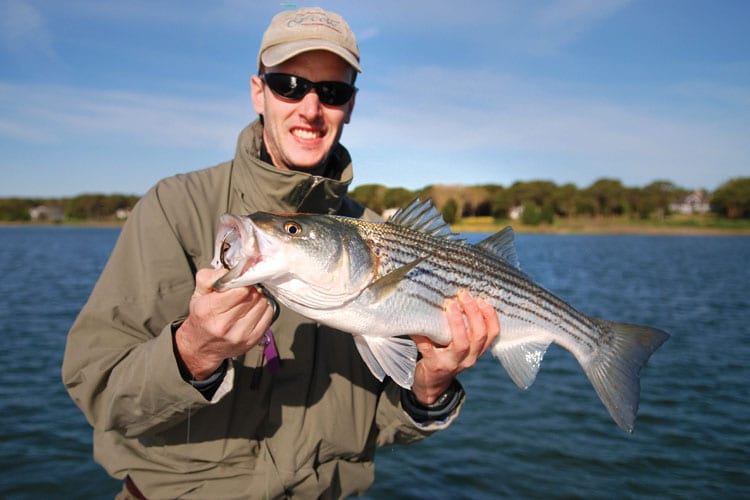There are new size limits in place for inland waters within North Carolina’s Central-Southern Striped Bass Management Area. During the harvest season, which runs until April 30, 2019, the minimum size limit for striped bass is 26 inches and two fish can be kept per day/per angler.
Waters covered by this new regulation include:
• Tar-Pamlico River and tributaries from Rocky Mount Mill Dam downstream to Norfolk Southern Railroad Bridge at Washington
• Neuse River and tributaries from Falls Lake Dam downstream to Pitchkettle Creek
• Pungo River upstream of the U.S. 264 bridge at Leechville
• All other unlisted inland waters of coastal rivers and tributaries in the Central-Southern Management Area, except Cape Fear River and tributaries
Striped bass are stocked annually into the Tar and Neuse rivers at a rate of 100,000 fish per river. These hatchery fish are raised to an advanced size prior to stocking, usually 6-8 inches. The objectives of these stockings are to supplement wild populations and help bolster natural production, according to Chad Thomas, coastal fisheries supervisor for NCWRC.
“Unfortunately, this objective is not being met,” Thomas said. “Formal evaluations conducted since 2010, with the assistance of genetic testing, confirmed that nearly all the striped bass adults collected from spawning grounds of the Tar and Neuse rivers were hatchery fish.”
Biologists hope the new 26-inch minimum size limit will give these hatchery fish additional protection to allow them to spawn multiple times prior to harvest. Larger, older striped bass contain significantly more and larger eggs. The idea is to increase egg production on the spawning grounds with the intention of observing recruitment of wild (non-hatchery) fish in these river systems.
“While we know this rule is frustrating to many of our anglers who like to keep fish, this is a conservation measure aimed to promote production of wild striped bass in the Tar and Neuse rivers,” Thomas said. “Currently, these river populations are considered fully supported by hatchery fish, which is counter to our management goal of having self-sustaining populations of striped bass in these rivers.”
Advances in genetic technologies now allow Commission biologists to calculate the percentage of hatchery fish returning to the Tar and Neuse rivers each spring. During field sampling, a small fin clip is removed from each fish prior to release, and genetic comparisons are then made with all known broodfish parents used during hatchery production.
“Genetic testing is absolute and allows us to calculate the percentage of hatchery fish each year,” Thomas said. “We will closely monitor the effectiveness of this new regulation and recommend modifications if management objectives are not being met.”
For more information about fishing North Carolina’s inland, public waters, visit ncwildlife.org/fishing.
